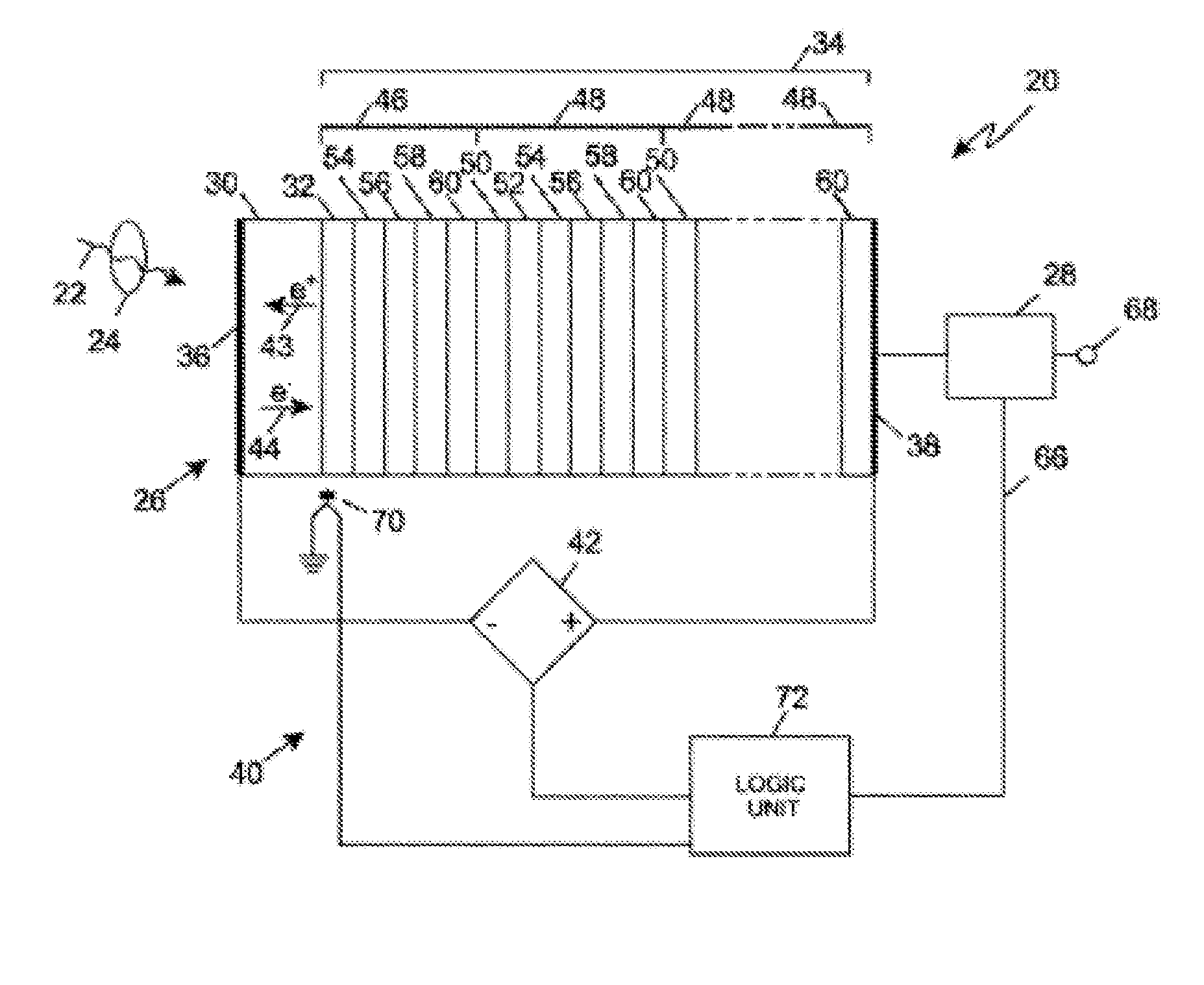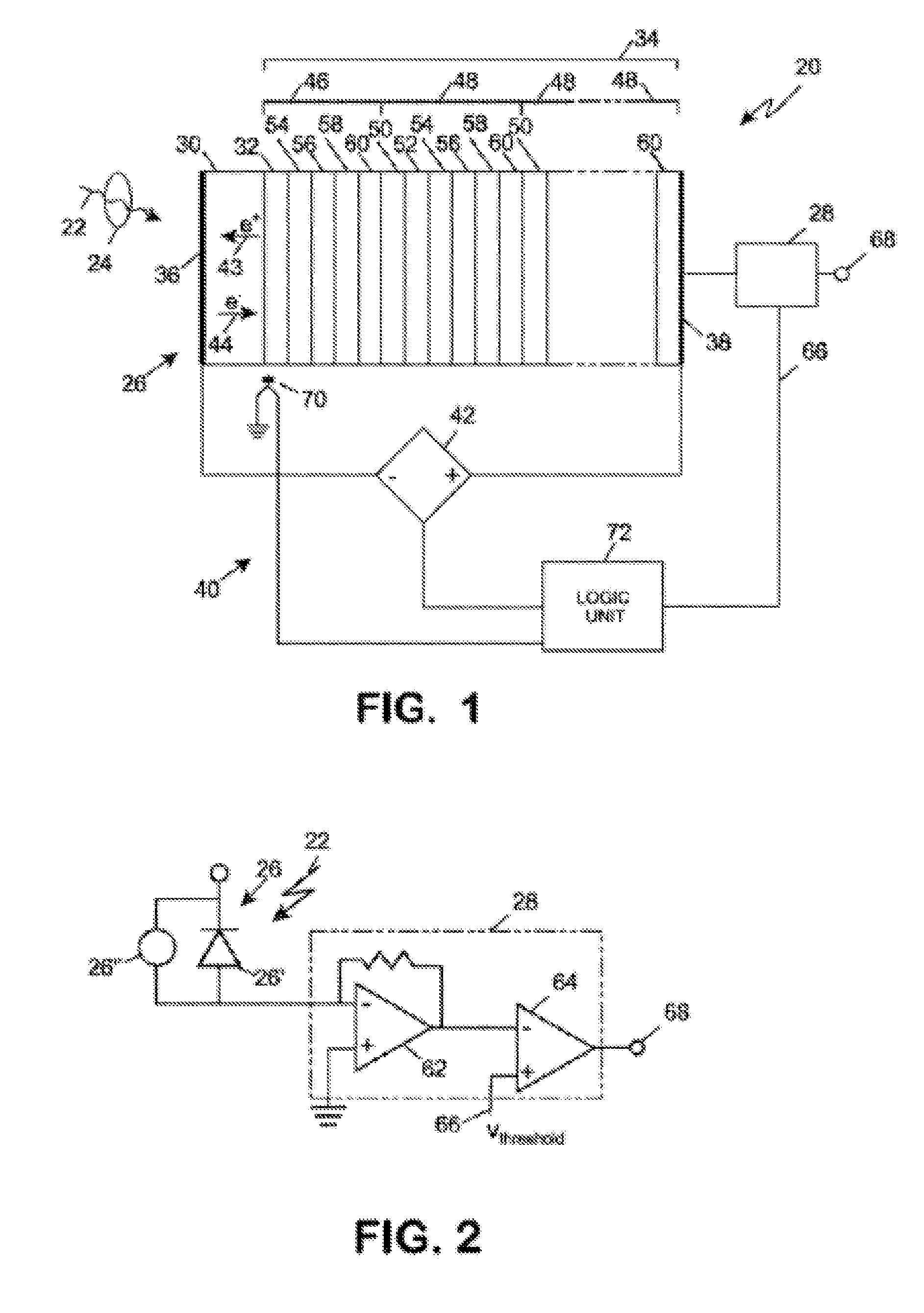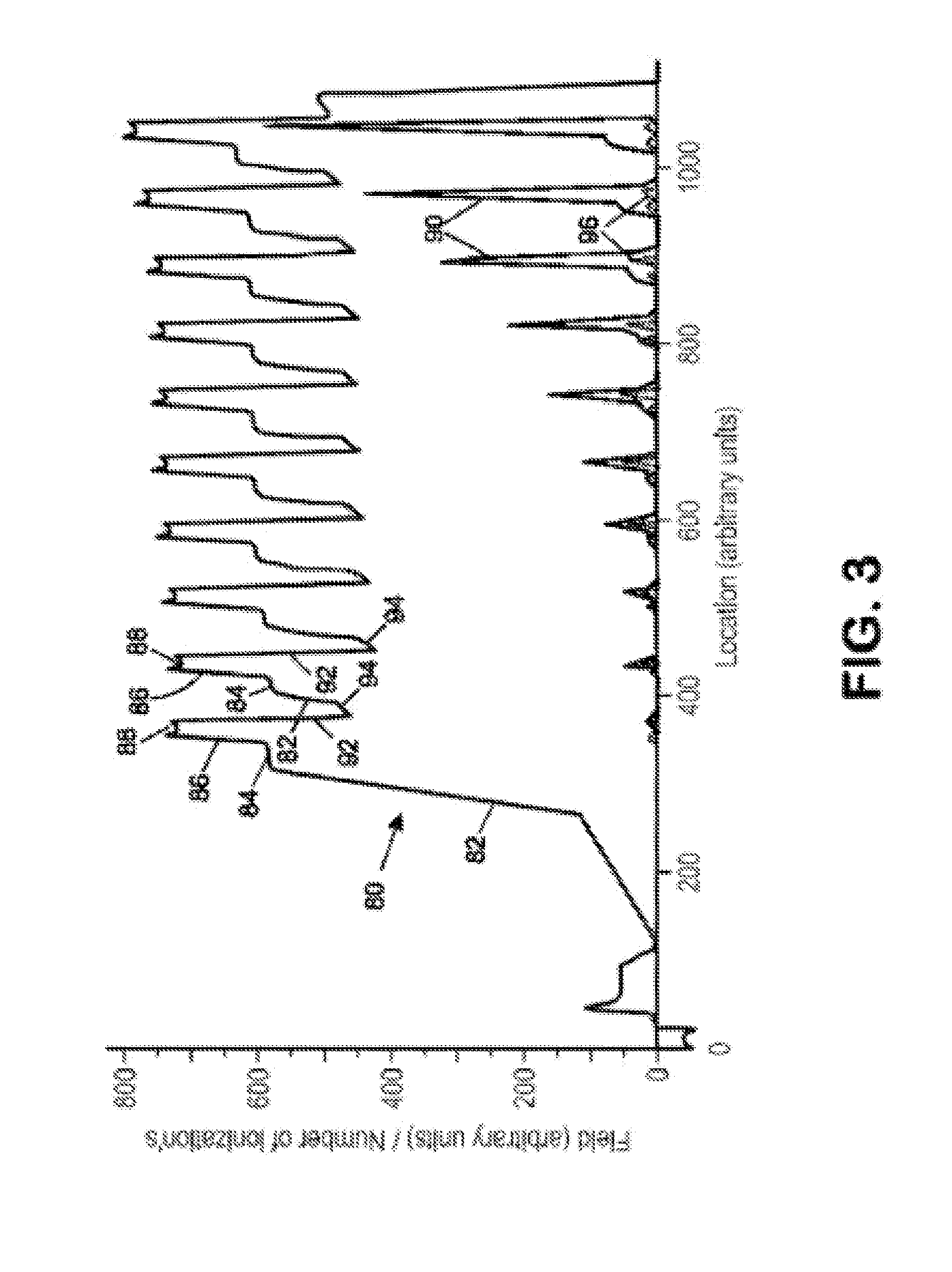Discriminating photo counts and dark counts in an avalanche photodiode
a technology of avalanche photodiodes and dark counts, applied in the field of photoreceivers, can solve the problems of avalanche multiplication, noise contribution of the amplification process itself, and output fluctuation about its mean value, and achieve the effect of increasing the “shot noise”
- Summary
- Abstract
- Description
- Claims
- Application Information
AI Technical Summary
Benefits of technology
Problems solved by technology
Method used
Image
Examples
Embodiment Construction
[0023]Referring in detail to the drawings where similar parts are identified by like reference numerals, and, more particularly to FIGS. 1 and 2, in an exemplary photoreceiver 20, such as is used in a laser range finder or a direct detection laser detection and ranging device (LADAR), incident light, one or more photons 22, impinges on the device's optics 24 and is focused on an avalanche photodiode (APD) 26. In the APD, one or more photons are converted to an electrical signal, a photogenerated current comprising photon induced events or pulses, which is transmitted to a detector decision circuit 28 which detects the electrical signal and, thereby, the interaction of the photon or photons with the APD. The popularity of APDs in high speed photoreceivers is attributable to the APD's high internal optoelectronic gain which enables the photogenerated current to dominate the thermal noise of sources in the photoreceiver circuitry without the need to amplify the incident light. The opto...
PUM
 Login to View More
Login to View More Abstract
Description
Claims
Application Information
 Login to View More
Login to View More - R&D
- Intellectual Property
- Life Sciences
- Materials
- Tech Scout
- Unparalleled Data Quality
- Higher Quality Content
- 60% Fewer Hallucinations
Browse by: Latest US Patents, China's latest patents, Technical Efficacy Thesaurus, Application Domain, Technology Topic, Popular Technical Reports.
© 2025 PatSnap. All rights reserved.Legal|Privacy policy|Modern Slavery Act Transparency Statement|Sitemap|About US| Contact US: help@patsnap.com



